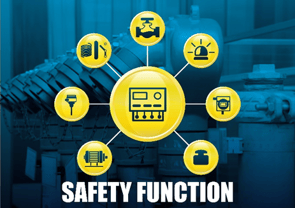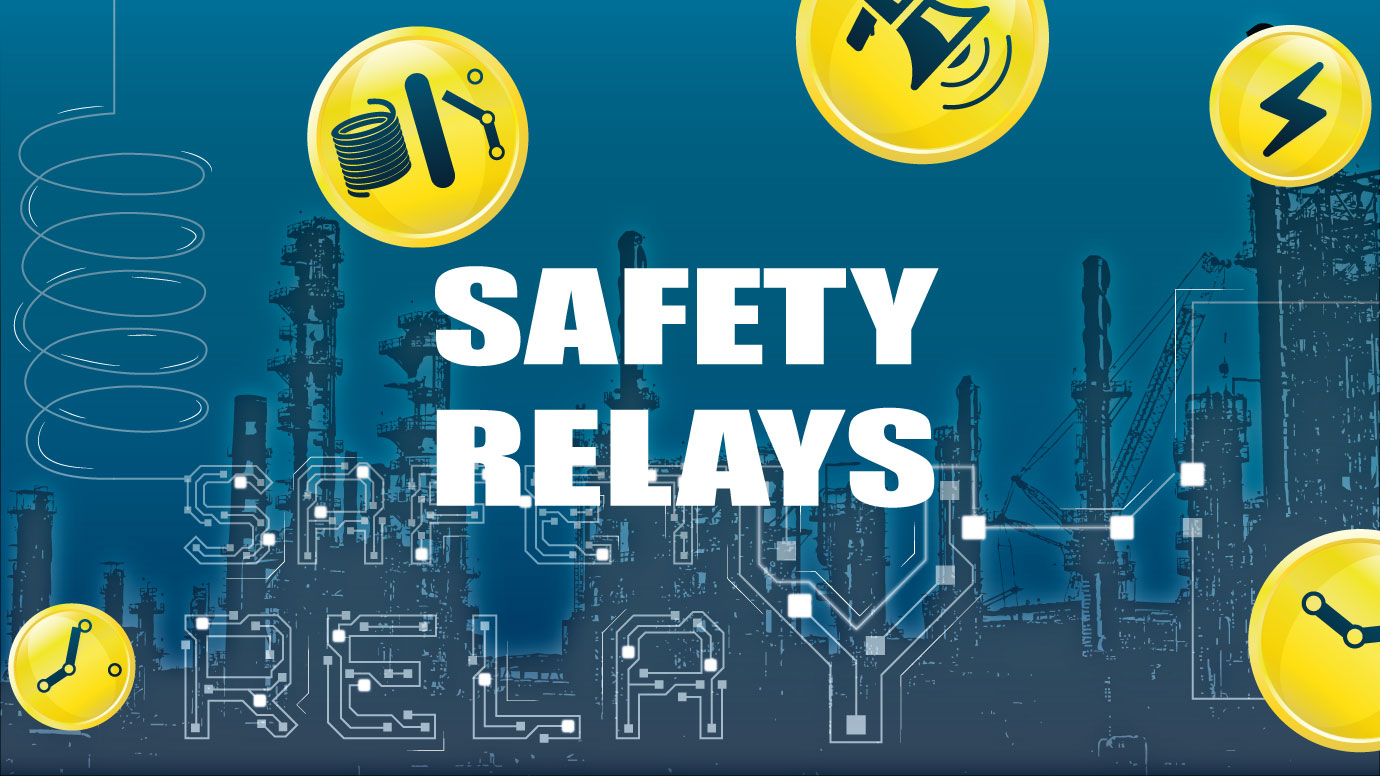During the course of industrial development, the idea and implementation of practical safety solutions emerged slowly but steadily. These solutions, particularly the use of standard relays such as the heavy-duty relay known as a contactor, became widespread and promoted.
In the event of a hazardous situation, the only guarantee was the isolation between the source of supply and the actuator. A further step forward was reached by using a combination of contactors (usually three), instead of only one. This practice could provide a basic protection system that could not be manipulated or bypassed easily by the operator in case of malfunctioning. This articulated process, led to the development of the safety relay as we know it today. Safety relays are components of fundamental importance in all applications where safety, as well as the protection of operations, machinery, and equipment, is crucial. In a single apparatus, such as a safety relay, built-in safety logics are contained to evaluate the input signals and make decisions based on predefined safety rules. These essential components found in safety circuits are widely used in various industries, including manufacturing, automation, robotics, and process control. The aim of a safety relay is to ensure compliance with safety standards and regulations, protect workers, and prevent accidents. It is crucial to select the appropriate safety relay for a specific application and ensure that it is installed and maintained correctly to guarantee its proper function.
Safety Function
One characteristic of a safety relay is its capability to be included in a safety instrumented function. Incorporating this device into the loop may be necessary in some circumstances, while in others, it might be indispensable. The objective of a safety function is to manage the entire automatic protection process of a more complex system. Therefore, a safety relay, in combination with a collection of equipment, takes an active part in reducing, mitigating, and limiting high-risk incidents. Safety relays are designed for this specific purpose but note that each safety relay is designed to manage a particular safety function and should be selected based on specific requirements of the application.

SIL, SC, and PL
A safety relay is also a device certified according to international standards, such as ISO 13849 and IEC 61508. These standards classify safety relays into diverse levels (SIL or PL) based on their reliability and ability to prevent dangerous failures. The selection of the safety relay should align with the required safety category for the application. Safety relays are essential for meeting safety standards and regulations in industrial environments. They enable compliance with international safety standards that define the requirements for safety-related control systems.
Safety relays are available with Safety Integrity Level (SIL) and/or Performance Level (PL) ratings. These ratings provide a measure of the reliability and risk reduction capability of the safety relay, ensuring that the safety function performs as intended in critical applications. There are differences between SIL and PL, but both indicate the level of risk reduction achieved by the safety relay.
PLC pulse test compatibility
A pulse test in the context of a Programmable Logic Controller (PLC) refers to a testing technique used to verify the functionality and response time of input and output signals. The main purpose of a pulse test is to ensure that the PLC's inputs and outputs are operating correctly and within the specified timing requirements.
The most recent safety relays available on the market are usually pulse test compatible and this information is usually clearly stated by the relay manufacturer in the device’s documentation. In case this information is not clear or cannot be found, it is always possible to run a compatibility test between the two apparatuses which can be done following some basic steps. how to perform a pulse test compatibility check on a safety relay is something that each manufacturer is aware of and can provide to all end users.
Monitoring function
The safety relay monitoring function is a vital aspect of a safety relay that ensures its proper operation and the effectiveness of the overall safety system. Safety relays continuously monitor various safety-related inputs and perform self-checks to detect faults or malfunctions in the relay itself and connected safety devices. This monitoring function helps maintain the integrity of the safety system, ensuring that it remains reliable and compliant with safety standards and regulations.
Service Load
Some safety relays available on the market are designed to provide, in addition to the safety contact, the S.L. (Service Load). It is possible to connect these terminals to an apparatus, which must operate in opposition to the safety load. These devices can be used to manage non-safety-related signals, such as acoustic or light signals from a lamp or a sounder. In some peculiar configurations, the service load can be directly wired to a digital input PLC card.
|
SAFETY LOAD |
SERVICE LOAD |
|
ACTIVE |
NOT ACTIVE |
|
NOT ACTIVE |
ACTIVE |
For each safety contact, there is a second contact: the service load. Here, it is possible to connect a non SIL/PL (certified) load. Such load gets activated in opposition to the SIL load. An internal exchange contact enables this. It is necessary to note that in most safety relays, the tension applied to the safety load is the same applied to the service load.
Conclusions
In conclusion, a safety relay is a device capable of performing a safety function within an instrumented safety system that complies with the two major standards of reliability and safety. This device can be considered as an extension of the monitoring function of a PLC. Furthermore, some safety relays offer the possibility of having an additional service load.


